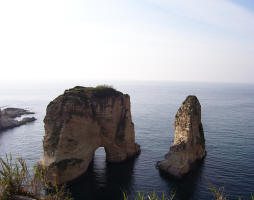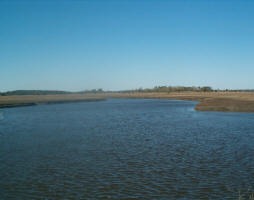| Geographical coverage |
Slovenia, Hungaria, Bulgaria, Greece, Serbia, Russia, Macedonia, Albania, Bosnia and Herzegovina, Croatia, Moldova, Romania, Turkey, Montenegro |
| Objectives |
The mission of the proposed DMCSEE is to coordinate and
facilitate the development, assessment, and application of drought risk
management tools and policies in South-Eastern Europe with the goal of
improving drought preparedness and reducing drought impacts.
Therefore DMCSEE will focus its work on monitoring and assessing
drought and assessing risks and vulnerability connected to drought.
The agreed core tasks of the DMCSEE were grouped into project objectives. 8 project objectives are summarized below:
1.To assess the data available for effective drought monitoring and early warning system.
There exists little knowledge regarding the current institutional
capacity of DMCSEE member countries in the areas of drought monitoring
and early warning, risk assessment, mitigation, and preparedness. As a
first step, the DMCSEE will conduct an assessment of institutional
capacity, including Meta data available. Further tasks are to ensure
data homogeneity and quality control and to design appropriate data
base.
2.To evaluate and select the most effective and reliable indices and indicators for drought assessment.
A common methodology for drought assessment will be adopted based on
existing experiences and depending on the availability of data. An
assessment of historical drought events and their impacts, in
particular social and economic, is part of this objective.
3.To conduct a drought risk assessment.
Identification of stakeholders/users and their needs is essential first
step of this objective. Drought risk assessment will be conducted for
the region using established methodology. The goal of this objective is
to identify the principal economic, environmental, and social impacts
associated with drought. The next step is to analyze these results,
select the most important impacts to be mitigated, and identify
appropriate mitigation measures. Analysis of drought vulnerability will
be conducted for the region. The drought risk and drought vulnerability
maps are one of the most important initial tasks of the DMCSEE. Knowing
vulnerability and risk, DMCSEE will be able to advice on improved
drought management and policy.
4.To identify the specific training needs.
It is critically important as the first step in this process to
determine the scientific, operational and institutional capacity that
exists at the national and sub-regional level. The DMCSEE will seek to
compile this information from interactions with national meteorological
and hydrological services. and many other organizations within the
region and will provide leadership for the identification of
specialized seminars, workshops, and conferences to build institutional
capacity in member countries on a risk-based approach for drought
management. Scientific exchange will be an integral part of the
development of the DMCSEE.
5.To develop and implement a data and information delivery system on drought management.
A principal role for the DMCSEE is the development of data and
information delivery system to end users and stakeholders. The most
immediate task is the development of a web site that provides end users
with access to all DMCSEE products and those products available from
member countries, as well as links to the principal drought-related web
sites that exist at the regional and international levels. The web site
will also contain information on mission and program activities of the
DMCSEE, including training opportunities, meetings, and research
activities. Other dissemination channels will also be employed for
providing information to end users in Southeastern Europe. These would
include both print and electronic media such as newspapers, television,
and radio.
6.To develop a comprehensive network of experts and institutions to assist the DMCSEE.
To establish close cooperation in the field of drought management
Memorandums of Understanding should be developed with a wide range of
experts and institutions within Europe and internationally to promote
and enhance the development of the DMCSEE in monitoring and
forecasting, mitigation, and preparedness. These would include national
and international technical organization in the field of meteorology
and environmental monitoring and national meteorological and
hydrological services.
7.To ensure communication and user feedback.
DMCSEE will develop an accessible strategy to communicate with end
users in a way that is understandable and not too technical. Special
external competencies will be needed to prepare document and notes that
use non-technical vocabulary, clear guidance and simple recommendation.
The language issue should also be taken into account.
8.To establish the permanent DMCSEE and ensure its sustainable functioning and operations.
Elaboration of future legal status of DMCSEE, its internal rules and
procedures and aspects of international accountability, responsibility
and evaluation will be performed with the assistance of specialized
consultancy. Based on the results of the first year of the project, a
review of the possibilities of contribution (technical, in kind,
financial, expertise and human resources) of each member country will
be conducted by the host country through consultation. A template of
yearly working programme for the DMCSEE to be used after the end of the
project will be proposed.
|
 Drought Management Centre for Southeastern Europe
Drought Management Centre for Southeastern Europe you are not logged in
you are not logged in





